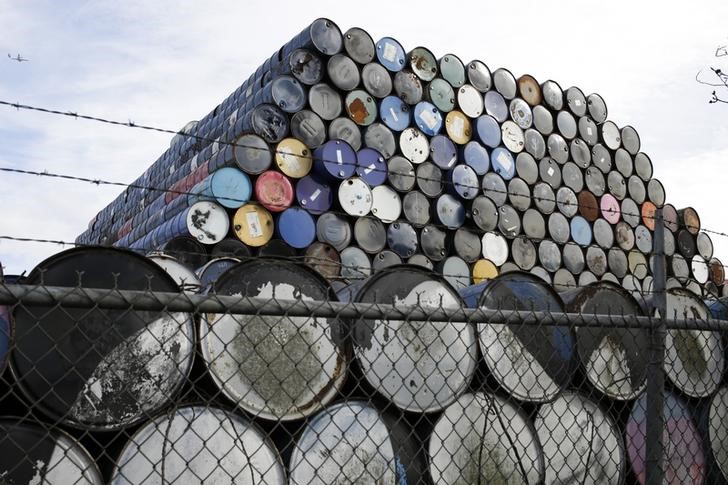Investing.com - Oil prices wavered near a five-week high in North American trade on Tuesday, following an impressive three-day rally which boosted prices by nearly 10%, as market players shifted their focus to weekly data from the U.S. on stockpiles of crude and refined products.
Industry group the American Petroleum Institute is due to release its weekly report at 4:30PM ET (20:30GMT) later on Tuesday. Official data from the Energy Information Administration will be released Wednesday.
Crude oil for September delivery on the New York Mercantile Exchange dipped 5 cents, or 0.11%, to trade at $45.69 a barrel by 9:39AM ET (13:39GMT) after rallying to $46.21 earlier, the most since July 15.
Meanwhile, on the ICE Futures Exchange in London, Brent oil for October delivery touched an intraday peak of $48.81, a level not seen since July 7, before turning lower to hit $48.26, down 9 cents, or 0.19%.
Crude prices are up nearly 10% over the past three trading sessions amid indications major oil producers are reconsidering a collective production freeze in a bid to boost the market.
The rally started last Thursday after Saudi Arabia’s energy minister said the country would work with other oil producers to stabilize prices at a meeting in Algeria next month.
Russian Energy Minister Alexander Novak said on Monday his country is opening up to an agreement with other major oil producers to cap output "if necessary" to achieve market stability.
However, market players remained skeptical that the meeting would result in any concrete actions. An attempt to jointly freeze production levels earlier this year failed after Saudi Arabia backed out over Iran's refusal to take part of the initiative.
Despite recent gains, indications of an ongoing recovery in U.S. drilling activity combined with elevated stocks of fuel products around the world is expected to keep prices under pressure in the near-term.
According to oilfield services provider Baker Hughes, the number of rigs drilling for oil in the U.S. last week increased by 15 to 396, the seventh consecutive weekly rise and the 10th increase in 11 weeks.
The continued increase in U.S. drilling activity fueled speculation that domestic production could be on the verge of rebounding in the months ahead, underlining worries over a supply glut.
